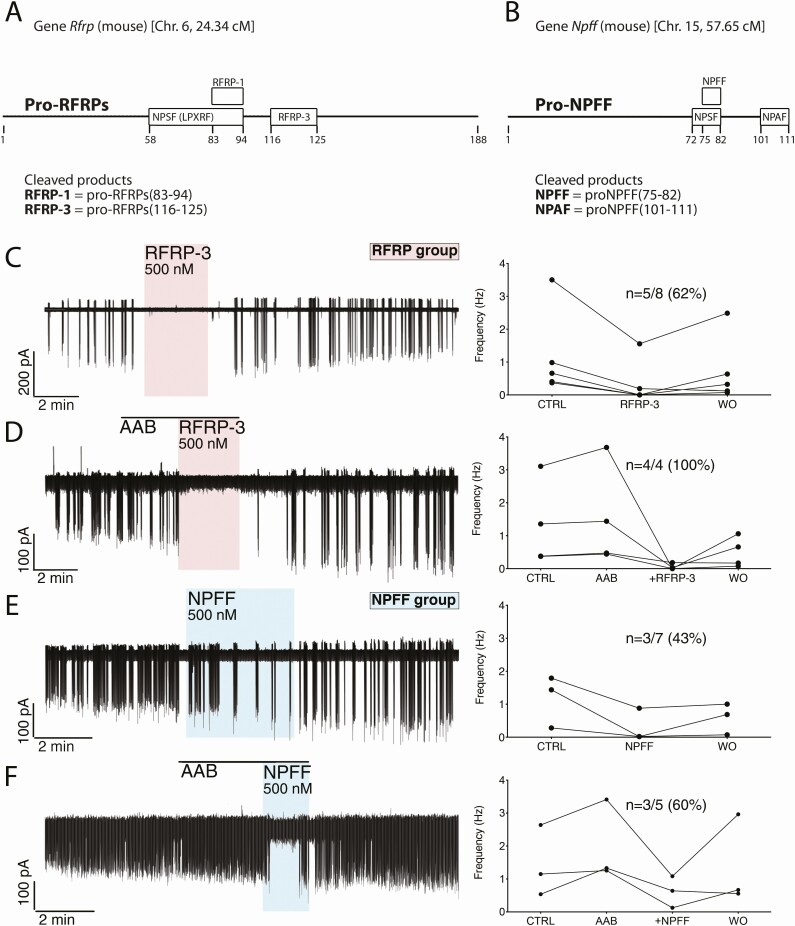Figure 1.
RFRP-3 and NPFF inhibits GnRH neuronal activity. (A,B) Schematics of RFamide gene products and their position in the propeptides. The mouse Rfrf gene, on chromosome 6, translates into a propeptide, proRFRP, which is cleaved into 2 active peptides, RFRP-1 and RFRP-3 (A). The mouse Npff gene, on chromosome 15, translates into a propeptide, proNPFF, which is cleaved into 2 active peptides, NPFF and NPAF (B). Note that at the time of their discovery, both precursors of RFRP-1 and NPFF were named neuropeptide SF. However, 1 belongs to the LPXRF family (RFRP group), the other to the XPQRF family (NPFF group). (C-F) Left, electrophysiological recordings of adult GFP-tagged GnRH neurons in acute brain slices. Right, Summary data showing quantification of the firing rate (in Hz) in individual GnRH neurons tested during the control (CTRL), ± pretreatment AAB, treatment (RFRP-3 or NPFF), and washout (WO). The values represent the average of 1-second bins for the last 1 minute of each period. (C,E) RFRP-3 (500 nM) and NPFF (500 nM) evoked a potent decrease in GnRH neuron firing rate that was maintained in presence of amino acid blockers (AAB, D,F).

